
Saturday marked the first ever Ocean State Oyster Festival, celebrating the resurgent and exploding oyster industry in Rhode Island, held at the Riverwalk in Providence.
Attendees were both curious and hungry. Smiles and a light-hearted attitude infected all those wandering around the festival looking for the next shellfish to slurp.
“For me it’s the history, the direct heritage of it all,” said Steven Thompson, a Warren Town Council member who spoke at length the “rebuilding” of the oyster industry in his town, which he said was “decimated”and is now growing again.
Farms from across the Ocean State came to display and provide the all-important oysters while music played and smiles were brought to nearly every face.

Oysters are a cornerstone of Rhode Island heritage. According to the Ocean State Oyster Festival oyster farming as far back as 1900 was a thriving industry in RI, Point Judith Pond provided an unmatched bounty of oysters. The industry grew fast with the exponential boom putting immense pressure on local oyster populations. Over fishing decimated the shellfish nearly driving them into extinction. The growth of industry drove itself into near collapse.
About 20 years ago Rhode Island sustainable aquaculture movement began and sparked the current oyster farming climate.
“It’s blowin’ up. From a few farms 15 years ago to now almost 50,” said Travis Lundgre, an employee of Salt Pond Oysters.
When asked why he loves it Lundgre said, “The calm of it all. Oyster farming is just different, different from every other kind of farming.”
Jesse Kwan, of the Oyster Country Club, called them “the foundation of the oceans.”
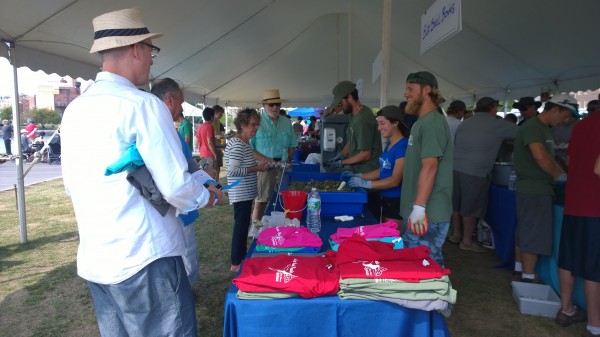 In Rhode Island, oysters are the quintessential local food, with nearly every farm supplying restaurants around the state almost exclusively. Some of the larger farms, including Salt Pond Oysters, Walrus & Carpenter Oysters, and Salt Water Farms, do export their stock to other states and around the country as well.
In Rhode Island, oysters are the quintessential local food, with nearly every farm supplying restaurants around the state almost exclusively. Some of the larger farms, including Salt Pond Oysters, Walrus & Carpenter Oysters, and Salt Water Farms, do export their stock to other states and around the country as well.
“You could eat one and I could eat one and we’d taste two different things,” said Lauren Nutini of Salt Water Farms, the largest oyster farm in Rhode Island.
With programs like the Blount Shellfish Hatchery at Roger Williams University, Blount Fine Foods, based in Warren, provided the endowment to create the only shellfish hatchery in Rhode Island. Warren was historically an oyster farming community and now that same community is pulling together in efforts to restore the oyster farms.
 The farms themselves use sustainable farming techniques to ensure the oysters not only thrive but provide a healthy ecosystem around them. One such practice is “reseeding” or pouring the old shells back into the farms allowing the baby shellfish something to latch onto and grow before popping off and being harvested.
The farms themselves use sustainable farming techniques to ensure the oysters not only thrive but provide a healthy ecosystem around them. One such practice is “reseeding” or pouring the old shells back into the farms allowing the baby shellfish something to latch onto and grow before popping off and being harvested.
Oysters filter nearly 50 gallons of water a day, with some farms having 6 million animals, that’s over 300 million gallons of water being cleaned cumulatively a day for years as they mature and grow.
“There’s nothing better after a day at the beach,” said attendee Fred Jodry, “It’s a mouthful of the ocean.” Jodry explained his intrigue with the resurgence of oyster farming in Rhode Island. “Industry took it out, and it’s nice to see this coming back.”
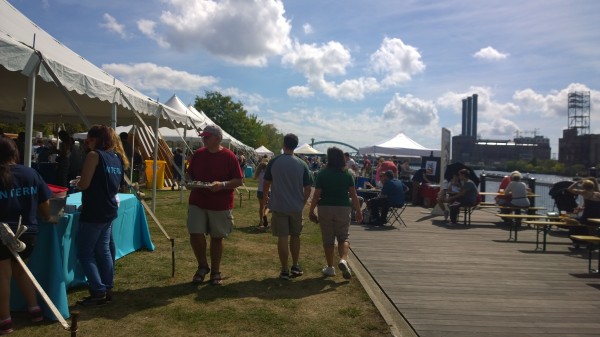

“A lot of the economic development proposals that we thought were good for smart growth passed,” Wolf said. “Those are embodied primarily in Governor Raimondo’s economic development package.”
He mentioned funding to incentivize development on the I-195 land, a fund for streetscape improvements on main streets of cities and towns, special incentives towards transit development, and others.
But the Rebuild RI tax credit could be the most impactful piece of the governor’s economic development package, he said. In its final form, there are opportunities for small historic rehabilitation projects, something that Grow Smart advocated for, and spoke to the Raimondo administration about.
“If the Rebuild RI tax credit does provide significant opportunities for large and small historic rehab projects, then that could be the single most important item,” Wolf said. “It provides continuing state incentives for redeveloping some of our tremendous collection of historic buildings, most of which are located in urban areas, many in distressed urban areas.”
Wolf added that the tax credit program also provides funding for the redevelopment of vacant lots in cities and towns. These lots could be turned into a number of things for public use, but Grow Smart is advocating for some to be converted into grocery stores, as many urbanites have difficulties accessing one.
“As a group that wants to see development occur primarily in cities versus rural areas, we think that this Rebuild RI tax credit is going to stimulate that kind of development,” Wolf said.
Looking toward the future, Grow Smart has plans for the short and long term. For the rest of the year, they’ll be focusing on educating towns and municipalities about the new tools they have, such as the Rebuild RI tax credit, to implement smart growth standards in their public centers.
“Our focus for the next four or five months is going to be to try to make sure that municipalities and developers, both for profit and nonprofit, that are interested in rehabilitating specific historic structures, fully understand how they can facilitate that through the Rebuild RI program,” Wolf said.
During this time, Grow Smart will become a resource for these groups to ensure that their process goes smoothly, but also to get as many historic rehab projects approved as possible. They’ll also be providing assistance for some of the bond issues that were passed last November, especially an environmental bond that includes $5 million for the redevelopment of contaminated sites, or brown fields. Wolf said that this bond is a big step forward, since it’s the first time that state money has gone toward such a project.
Wolf added that Grow Smart also plans to work with the governor’s administration to develop a technical assistance for local governments so they can better use the new tools that have been given to them for redevelopment, such as tax increment financing, which can be used to put the funds together for brownfield development.
In the long term, Wolf said they have several goals, but they all boil down to building a stronger economy, while maintaining Rhode Island’s personality. This all includes employment for city residents, strengthening farms and locally produced agriculture, and a more user-friendly transportation system.
“In a broad sense, our in Rhode Island, and the work nationally in the smart growth movement, is about changing the predominant development pattern in America, which has existed for the past 70 years or so, which has been a very auto dependent, suburban oriented development pattern,” he said. “We’re not anti suburban, and we’re not anti auto, but we think that we need a more balanced approach than what we’ve had in the state and in the country for decades.”
A successful year can’t happen without some marked failures, though. Grow Smart was a staunch supporter of Governor Raimondo’s RhodeWorks legislation, which tore a rift between the House and Senate last session. While the revised bill passed in the Senate, it didn’t even reach the floor in the House, with Speaker Mattiello urging for further study. The bill would use tolls on tractor-trailer trucks to cover the costs of rebuilding deficient bridges, as well as support a more modern transit system.
“We’re disappointed it didn’t pass both houses, but we think there’s a good chance it’s going to be approved either later this year or early next year. We’re working with the Raimondo administration, especially the state department of transportation, on that proposal,” Wolf said.
He was also disappointed that there was not a specific and significant commitment to multi-year funding for historical rehabilitation projects added to the state historic tax credit program.
RhodeMap RI was presented another sticky situation for Grow Smart. While it did pass as legislation, Wolf explained that there was so much controversy around the bill that it became hard to use it as the basis for any policy decisions. The bill included expansions for affordable housing, which conservative activists called “socialist,” fearing the takeover of municipal zoning regulations.
Although the plan was ultimately approved, Grow Smart’s main concern after the public uproar it caused was that it would sit on a shelf and have no policy effect whatsoever. However, Governor Raimondo’s economic development package includes many of the basic priorities that Rhode Map sought to achieve, and which Grow Smart supports.
“Our main commitment was to the goals and the proposed policies of RhodeMap, not to RhodeMap, the name or the brand,” Wolf said. “Our goal this sessions was to get as many of the initiatives that are in the spirit of Rhode Map approved as possible, and a lot of the governor’s economic development package is in that spirit.”
“If decoupling these ideas from RhodeMap is what’s necessary, politically, to have them enacted, then that’s a small price to pay,” Wolf added.
Even with the stigma surrounding RhodeMap, and the limbo that RhodeWorks currently lies in, Wolf said he is still very comfortable calling this legislative session a success for Grow Smart. As far as next year is concerned, their goals are still in the planning stage. For now, Grow Smart celebrates what they’ve already won, and not the battle ahead.
]]>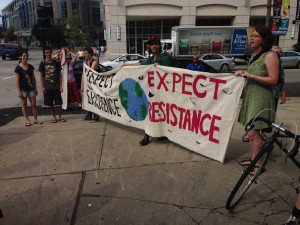
The plant, called the Clear River Energy Center, would utilize fracking to generate energy with natural gas. Fracking is a process that involves drilling into the earth, and then shooting a high-pressure water mixture at the rock to release the natural gas inside. Environmentalists have opposed the practice for a number of reasons. First, the process uses huge amounts of water that must be transported to the site. Second, many worry that dangerous chemicals used in the process may contaminate groundwater around the site. There are also concerns that fracking causes small earthquakes.
The company that is sponsoring and privately funding the $700 million project, Invenergy, says that the practice is clean and environmentally friendly because the new plant will prevent older, less efficient plants from emitting pollutants like carbon dioxide, nitrogen oxides, and sulphur oxides into the air.
Invenergy has predicted $280 million in energy savings for Rhode Islanders once the energy center is up and running. There would be an overall economic impact of $1.3 billion between 2016 and 2034. Roughly 300 construction jobs would be added to the state’s workforce to build the facility, over a 30 month time period. There would also be 25-30 permanent, skilled positions to actually run the center.
“The construction of this clean energy generation facility will create hundreds of jobs while delivering more affordable and reliable energy to our businesses and homes,” Governor Raimondo said. “We are tackling our regional energy challenges, committing to cleaner energy systems in the long-term, and putting Rhode Islanders back to work.”
Even with this promise of clean energy, there are still many staunch opponents to the proposed facility. Fighting Against Natural Gas, or FANG, held an emergency rally in front of the Chamber of Commerce as Governor Raimondo unveiled her plan. Some even believed the facility to be a “rape” of Burriville’s air, water, and soil.
Robert Malin from Rhode Island’s chapter of the Sierra Club attended the protest, in opposition to the proposed facility. Malin believes that the government has been less than forthcoming with details for the project, and shouldn’t be trusted.
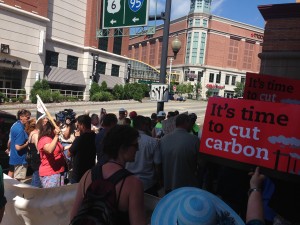
“The Governor has been saying that she doesn’t know anything about gas or fracking, and that this whole thing is just one little expansion that they’re doing, and by the way, we don’t have any money to build out the renewables, it’s a wish. Maybe in 20 years we’ll get around to actually doing it,” he said. “Then the next thing you know, they can dig into their pockets, they can pull out $700 million, and this thing that they’re planning, had to be planned in advance. They kept this whole thing under the table. Why wasn’t the public able to decide whether we want an explosive power plant building, bringing fracked gas, a deadly practice that was outlawed in New York state, that’s what we’re bringing.”
Malin explained that even though many don’t consider natural gas a fossil fuel, believing it lacks a carbon footprint, the energy source actually leaves what he called a “ghost footprint,” and still contributes to global warming.
“You’re trying to track a colorless, odorless gas,” he said. “Unfortunately, when it gets into the atmosphere, it’s called an accelerant to global warming. So, if you can imagine, you’ve got a big wood fire, and you take some gasoline and throw it on the fire. It flares up really quick. So if you’re not right there when you’re measuring it, when it flares up, then it’s very hard to track. The bad new is that it has the same carbon footprint as other fossil fuels, like coal and oil when it’s done.”
Stephen Dahl, from Fossil Free Rhode Island, said that Raimondo’s plan is short term, and that there are better options and avenues for the state to undertake.
“I think that is a very short gain that they are playing. In the short term, we’ll have jobs. For the longer term, if we follow countries like Germany and Scandinavia, and their mix of energies, in which we can build a transition to 100 percent wind, water, and solar for all purposes, both residential and commercial, here in Rhode Island, by 2050,” he said. “I understand that she has a limited term in office, and she wants to get something done. The way she’s chosen forward, though, is unfortunately, that short-term prospect, which will bring us more catastrophes. So, I object to it.”
Raimondo, and Invenergy’s Founder and CEO Michael Polsky both insisted that fracking, in combination with renewable energy sources, is only one of many puzzle pieces that can be put together to help slow climate change. According to Invenergy, the Clear River Energy Center will add more than 900 megawatts of new, cleaner energy to the regional energy grid, and will displace older, less efficient plants. It will also invest in well treatment and system upgrades, which will benefit 1,200 Pascoag Utility District water customers by contracting on a long-term basis for industrial water supply. Commercial benefits for the town of Burriville include millions of dollars in tax revenue, as well as the reduction of the property tax burden for homeowners.
Once approved, the Clear River Energy Center will begin construction in 2016, with operations scheduled to begin by summer 2019.
]]>
RGGI, which was launched in 2009, allowed participating states to establish a cap on carbon dioxide emissions from fossil fueled electric generating facilities. The power plants in these areas must possess a tradable carbon dioxide allowance for each ton that they emit, and these allowances are distributed through quarterly auctions.
“Rhode Island’s participation in RGGI is a vital component of the state’s energy and environmental policy framework. This plan will not only advance important energy goals, but it will also contribute to local economic growth by investing in carbon-free energy resources, including energy efficiency and renewable generation,” State Energy Commissioner Marion Gold said.
The $14 million will support a number of clean energy programs. Three million will support the capitalization of the Rhode Island Infrastructure Bank, and another $3.6 million will go towards supporting energy efficiency measures for residential, commercial, and industrial consumers. Two million more will support the installation of LED streetlights throughout the state, as well as support clean energy investments in state and municipal buildings. Another $300,000 will go toward funding residential rooftop solar panels.
LED streetlights will also be installed all along Rhode Island’s highways, not just within towns and cities. $2.8 million will be allocated towards that venture. Rhode Island Department of Transportation Director Peter Alviti said that energy efficiency is a top priority.
“The conversion to LED streetlights not only has the potential of reducing statewide energy costs by approximately one million dollars per year, but it also demonstrates the financial benefits of good environmental stewardship,” he said.
The Office of Energy Resources also stated that the plan will support job growth along with enhancing sustainability.
“This is a smart plan that will grow jobs, reduce energy costs, and help protect our environment,” Governor Gina Raimondo said. “By investing in innovative clean energy initiatives like the Rhode Island Infrastructure Bank, Solarize Rhode Island, and energy efficiency programs, Rhode Island can help lead the nation towards a more sustainable energy future while also growing our economy.”
The financial impact is only one part, though. These investments also have the potential to reduce greenhouse gas emissions, which will improve air quality throughout Rhode Island
“Each kilowatt-hour of energy saved or generated by a renewable energy source means one less kilowatt-hour generated from fossil fuel-fired sources,” said Department of Environmental Management Director Janet Coit. “Programs like these may start small, but the represent important steps forward toward achieving our greenhouse gas reduction goals and transitioning to a clean energy future.”
The Office of Energy Resources is currently taking public comment on the plan, and can be reached by emailing Barbara.Cesaro@energy.ri.gov, or by mailing One Capitol Hill, Providence, Rhode Island, 02908. There will be a public hearing on the proposal on July 29 at 10 am in Conference Room B on the second floor of One Capitol Hill.
]]>

Providence Mayor Jorge Elorza has taken a step towards a more environmentally friendly city with his new SustainPVD Environmental Program. The goal of the program is to reduce greenhouse gas emissions and address climate change within the city by increasing recycling, expanding composting, and making municipal buildings more energy efficient. Residents can participate as well, by obtaining a home energy assessment at no cost through National Grid’s EnergyWise program, and by finding low to no-cost energy saving opportunities by joining Find Your Four. Residents can register here or here.
Residents are also encouraged to explore solar alternatives. To get a free solar energy assessment, sign up by July 31 by contacting the West Broadway Neighborhood Association at 401-831-9344, or WBNA@WBNA.org.
“Climate change poses significant challenges to Providence in terms of its effect on our waterfront, the impacts of extreme heat, and especially on vulnerable populations,” Mayor Elorza said of the program.
In order to help promote the initiative, Elorza received an energy audit from National Grid in his own home on Tuesday-his first after living there for ten years.
“Through my home energy and solar assessments, I learned how I can make a difference and even save money along the way. I encourage all residents to do the same and help Providence become a greener, healthier, more livable city.”
Providence ranks 32nd in the 51 largest cities in the country for energy efficiency, according to a report by the American Council for an Energy Efficient Economy. The report factored in government operations, community-wide efforts, buildings policies, utilities, and transportation.
]]>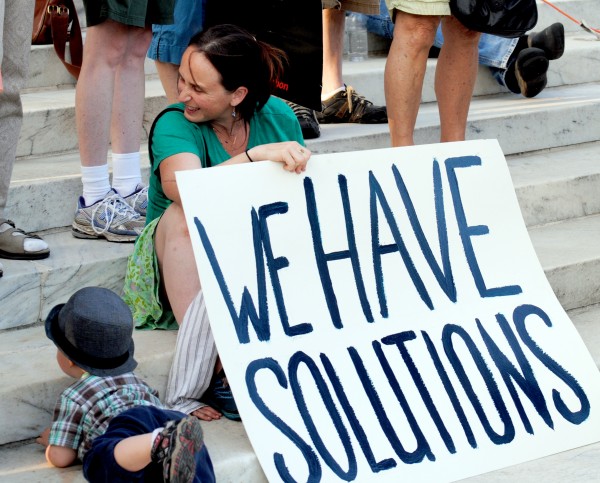 If there was one message that came through loud and clear from the 22 speakers at the Environment is Everyone’s Business rally held on the south lawn of the State House Wednesday evening, it was that the time to take serious action on climate change is running out, if the time hasn’t already passed. Over 150 people attended the event – people anxious for real leadership, on a state level, on such issues as renewable energy, rising sea levels, storm preparedness and greening the economy.
If there was one message that came through loud and clear from the 22 speakers at the Environment is Everyone’s Business rally held on the south lawn of the State House Wednesday evening, it was that the time to take serious action on climate change is running out, if the time hasn’t already passed. Over 150 people attended the event – people anxious for real leadership, on a state level, on such issues as renewable energy, rising sea levels, storm preparedness and greening the economy.
Robert Malin, on the executive committee of the RI Sierra Club, organized the event. At one point he apologized to the crowd for the seemingly never ending supply of speakers, but as he said, usually he asks a bunch of people, and most can’t come. This time, nearly everyone he asked to speak made time to be at the rally. Perhaps the people closest to the problem understand that time is truly running out?
Penn Johnson supplied some warm up entertainment…
…then Ray “Two Hawks” Watson sang a Native American song.
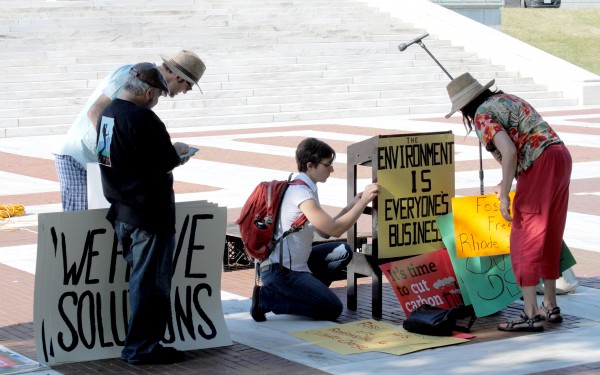
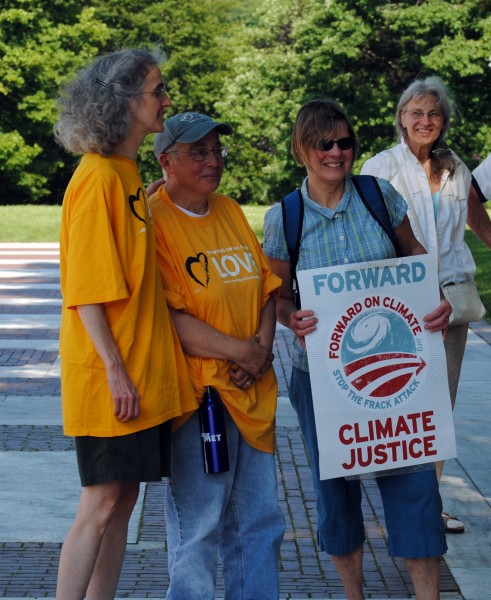


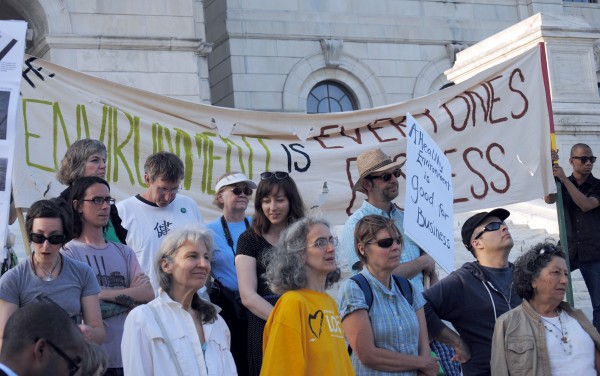

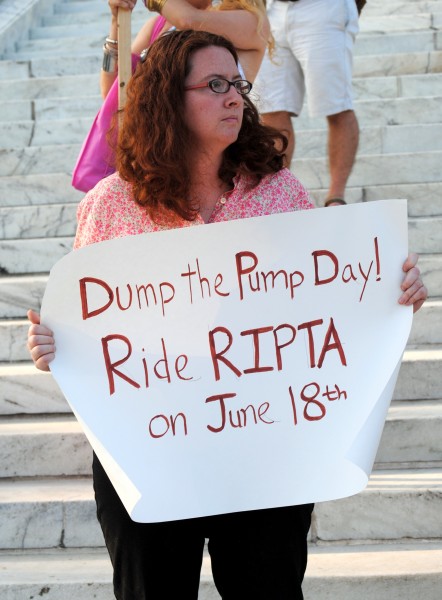
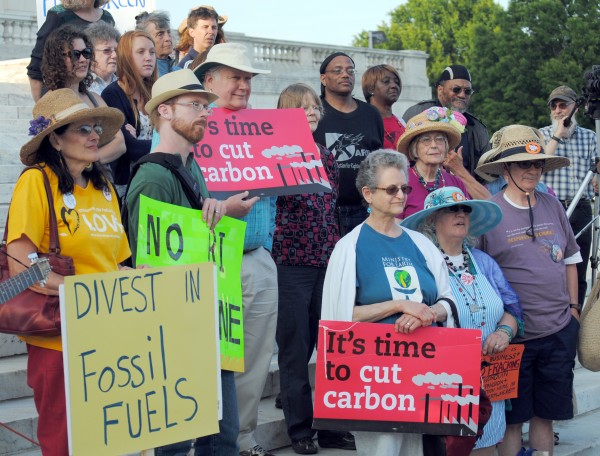
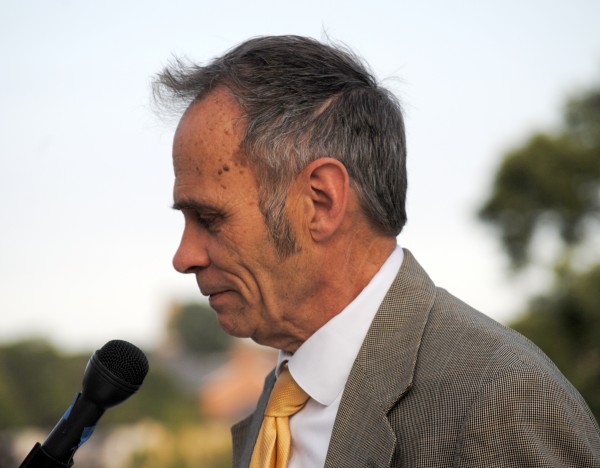

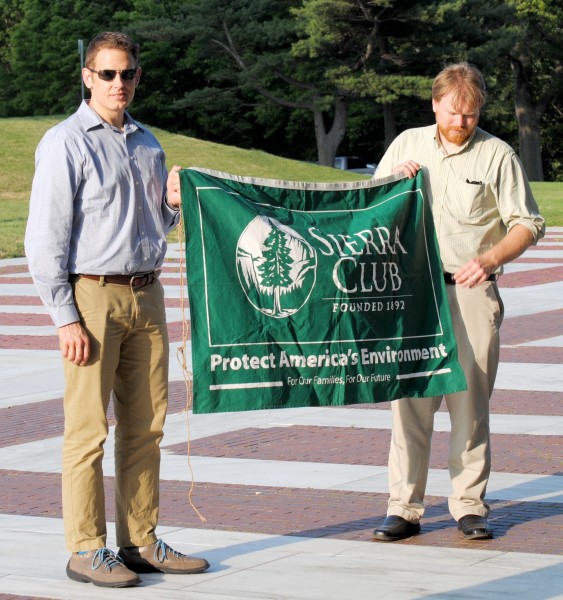
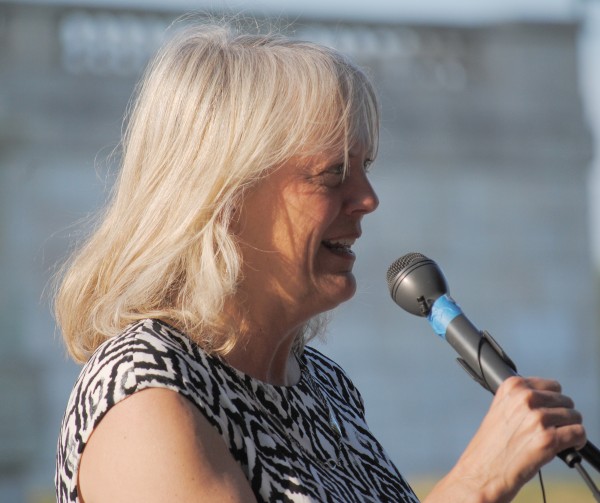
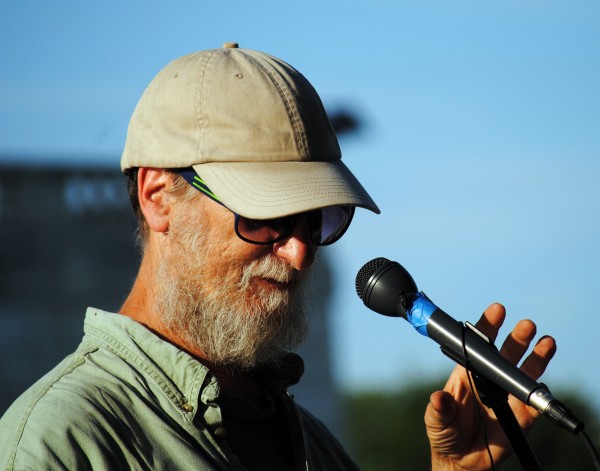



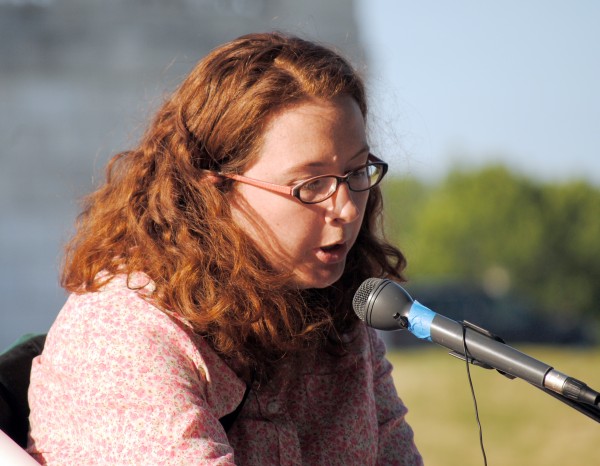

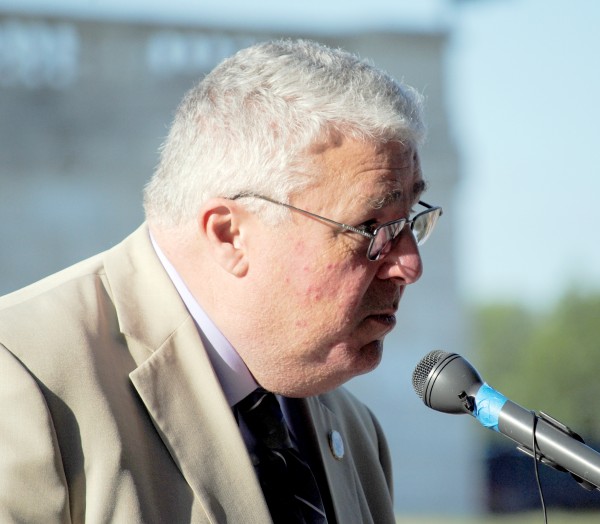
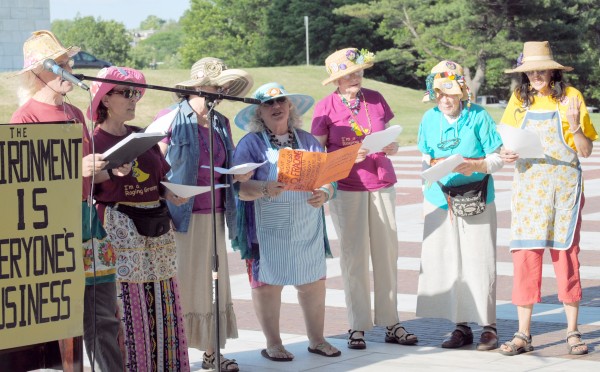


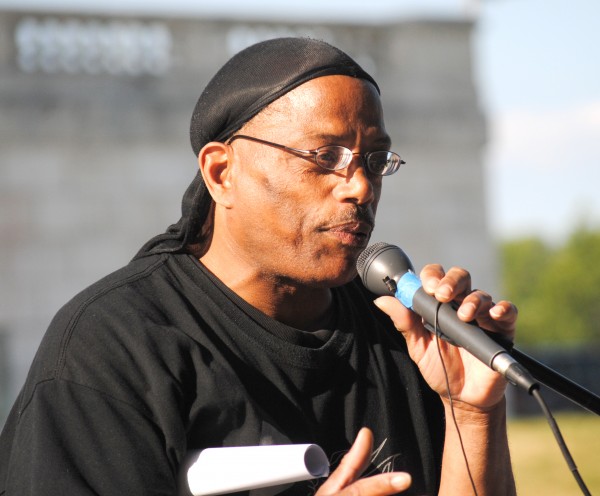
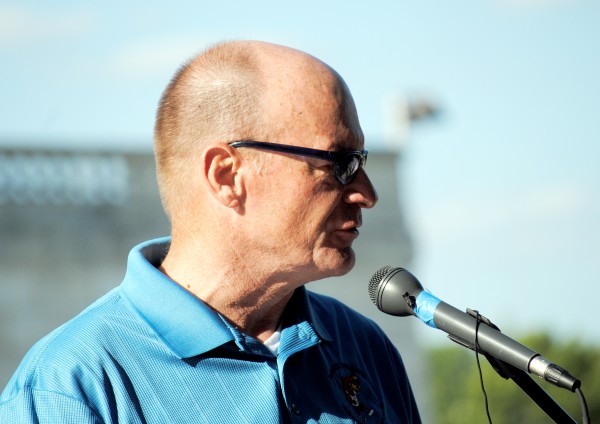
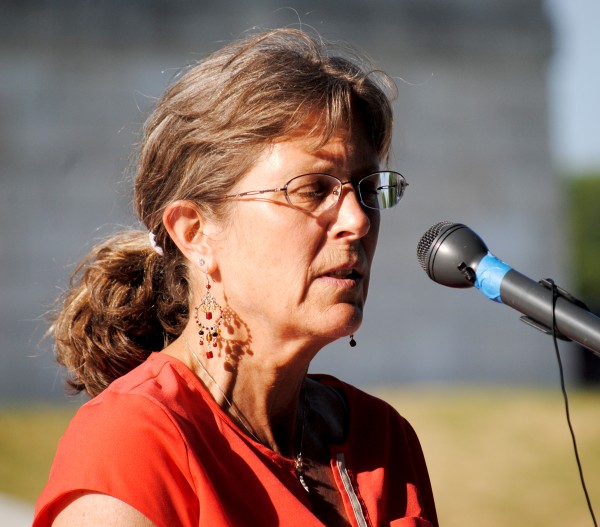
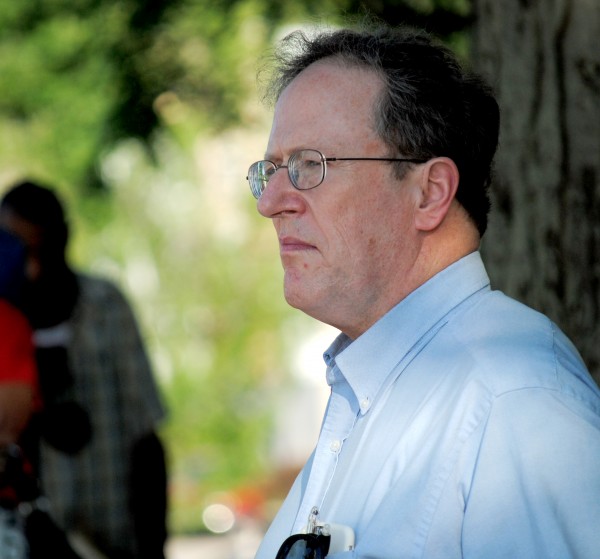


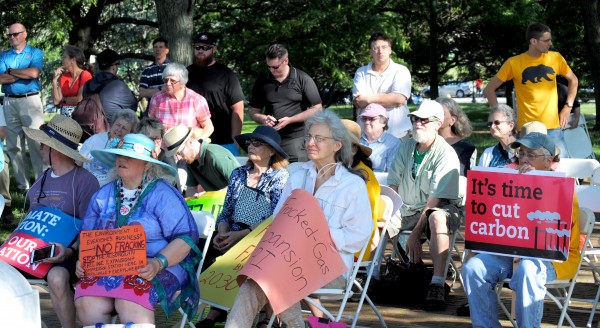


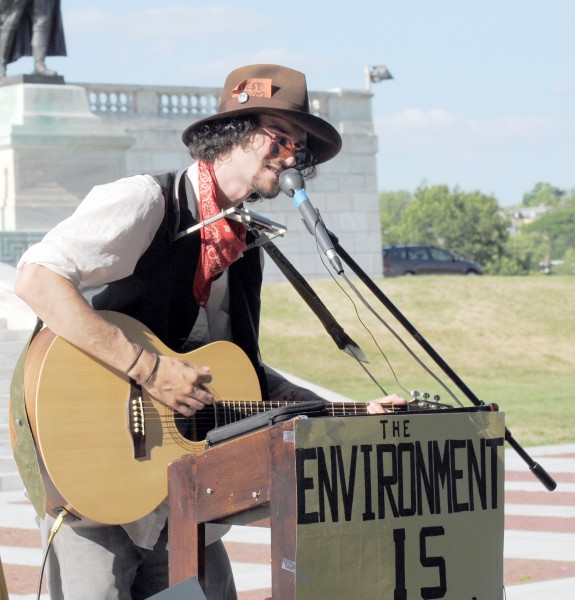
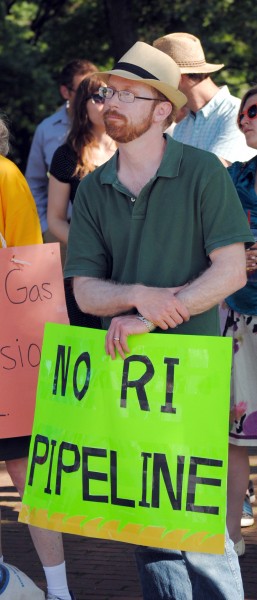
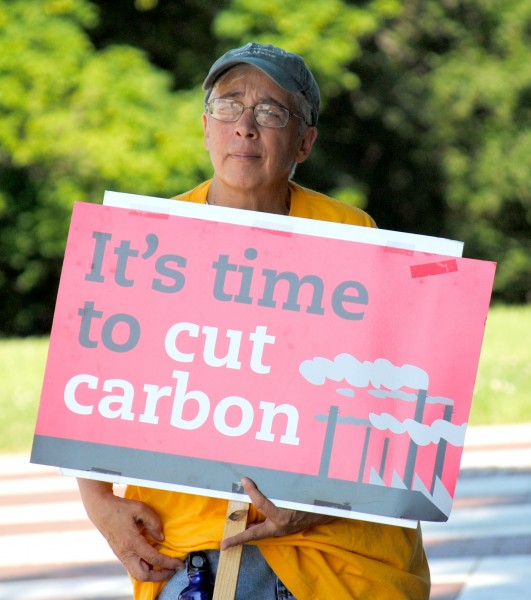

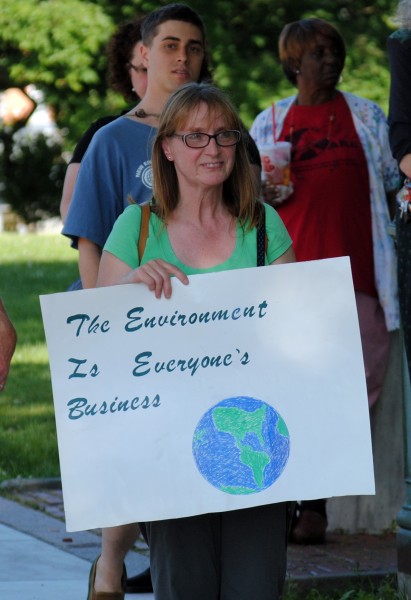
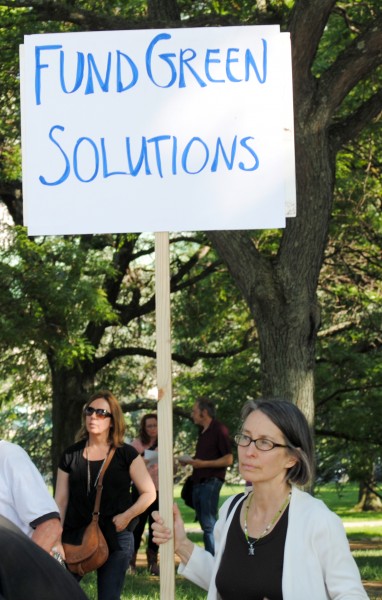
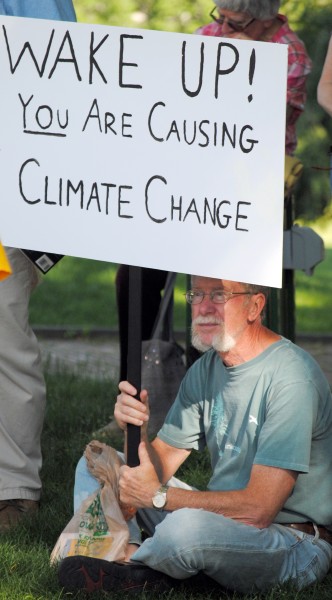
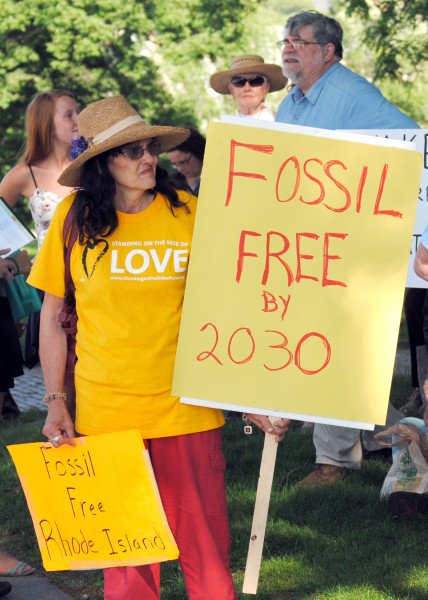
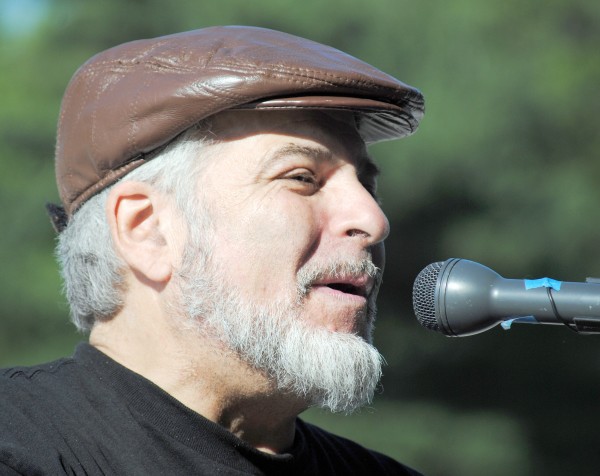
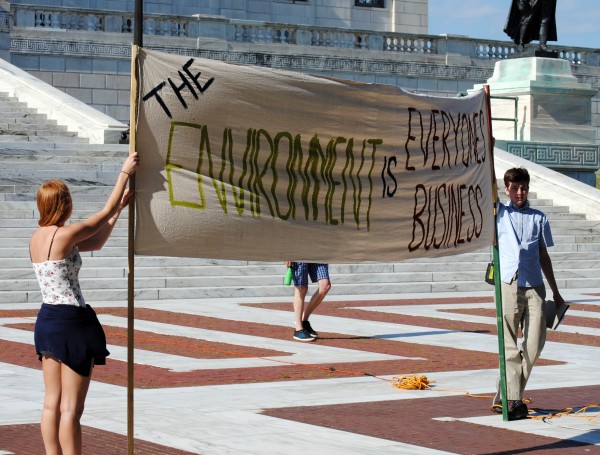
I thought about what to say, and could easily give you a stump speech, but instead today I want to challenge you to think about something not really on the radar … the End of Economic Growth.
Ecosystems are in collapse, primarily to feed the ever-expanding maw of consumerism. We must have MORE. And without MORE civilization will end. Excuse me, but what planet are they living on?
Here on Earth, we need to use less, and considering how many people really do NEED more, then the one percent and the middle class in the industrial world are going to have to use less.
Some people think that is impossible or it would be horrible. But we have to think about prosperity rather than growth. We have to reduce inequality, heal ecosystems, close the war machine, create zero carbon emissions, reforest and farm our sprawl. Not build shopping centers or the next big thing.
There is much spending we could easily eliminate in ways that mean a happier, healthier, and more vibrant community while spending less money and refusing to exploit workers around the world.
For Providence’s prosperity start with food security and turn the I-195 land into farms, not biomedical labs or baseball stadiums. If we keep thinking economic development starts with real estate speculation and subsidies for the rich, we shall be stuck forever. If we think we need to relax environmental protections to grow the economy faster, remind yourself that for 99 percent of us growth left town years ago, and ecosystem health underlies our prosperity.
The I-195 land is a brownfield, and I agree that brownfields are among the keys to the future of the RI economy, but not how the clowns on Smith Hill think about it, where giving subsidies and tax breaks to the rich is the only thing on the table.
I want you to think about the connection between brownfields and tropical forests. The 195 land destroyed neighborhoods 50 years ago, so it is hard to think about the people who lived there, but think about a place like Olneyville where the brownfields still are embedded in a neighborhood. Who lives there, and who will benefit from Brownfield redevelopment?
Now think about forests. Forest health may be the most important indicator of ecosystem health on Earth, and no one has ever figured out how to build cities without a new supply of wood. Now think about the people who live in forests, who are often the most marginalized and disenfranchised people in a country, just like those who live near brownfields. Usually the wood supply was obtained by genocide.
With the forest more than half gone and our ever growing understanding of how important forest are to our communities people are wondering how to keep the forests healthy. The World Bank did a study and figured out that the best way to preserve forests and help forest communities escape poverty is to give the forest dwellers secure tenure, and then make sure that any economic development projects keep the benefits in the hands of the poorest people in the community, usually women.
Brought to Providence it is clear that as long as the benefits from the development of brownfields is directed towards the speculators and the inside dealers (the same people who steal forests from the people who live there) instead of the benefits staying in the hands of the people in the community, our wealth gap will get worse, our economy and ecosystems will crumble and the world will be a more violent place.
Keep the Pawsox in Pawtucket and make sure the benefits of redevelopment flow to the poor, not the rich. This is how you heal ecosystems and create prosperous communities. And one day I hope the clowns of Smith Hill will begin to comprehend.
https://youtu.be/luqAtrR566c
]]>
A new study says a carbon tax in the state would create between 2,000 and 4,000 jobs, as well as create up to $900 million in state revenue by 2040. Scott Nystrom, a senior economic associate and project manager for Regional Economic Models, Inc. presented the study’s findings at Brown University.
Sponsored by the Energize Rhode Island Coalition, REMI’s study examined the possible benefits and consequences of instituting such a tax in the state.
Introduced this year, the Carbon Pricing Act has been tabled for the session but will be resubmitted next year. The bill, if passed, would be the first of its kind in the United States, setting an environmental standard for the rest of the country. More information can be found here.
Energize Rhode Island is currently promoting the Clean Energy Investment and Carbon Pricing Act, which would impose a carbon price (or tax) on all fossil fuels at the first point of sale within the state. The price would be $15 per ton of carbon dioxide for the first year the act is in effect, and raise at a rate of $5 per year.
The Carbon Pricing Act has two main goals – to provide a disincentive for using fossil fuel revenue to compensate for the cost of moving toward green energy. The price would be returned to Rhode Island’s economy in four different ways: a dividend check to households, a dividend to employers based on their share of state employment, a fund for energy efficiency costs, and administrative overhead.
According to REMI’s analysis, Rhode Island would receive positive benefits from implementing a carbon price.
“You actually have more jobs in Rhode Island that you would have otherwise with this policy,” Nystrom said during his presentation. Although the impact is relatively small, only around 1 percent of the jobs in the state, that’s still 2,000 to 4,000 jobs that were not there before. The Coalition says 1,000 of these jobs would be created within the first two years of the price’s introduction.
Total gross state product would rise as well, with the construction industry gaining roughly $86 million. The only industry that takes a serious hit due to the price is chemical manufacturing, which would lose $16 million. Real personal income would also increase between $80 and $100 million dollars during that time.
Nystrom also explained that instituting a carbon price could result in a population increase.
“Because the labor market is stronger, it draws more people to the state to an extent,” he said. “They move into the state as a consequence of the labor market, they buy a house, they settle down, and they increase the state’s population.”
With all of the new jobs and people living in Rhode Island, state revenues would be on the rise as well, earning between $200 and $900 million through the 2030s.
For all these benefits, cost of living would only increase minimally.
“Even though this does increase the cost of energy for states, It’s about a half a percent,” Nystrom said. “This means you have three months of extra inflection between now and 2040 than you would have otherwise.”
Carbon emissions were not the main focus of the study, but Nystrom did add that they would decrease over the course of a few years, and then stabilize.
“Emissions are purely a byproduct,” he said. “This is a result of the model.”
]]>
The Carbon Pricing and Clean Energy Investment Act bill before the General Assembly has two goals. The first is to create a tax on fossil fuels – coal, oil, natural gas, petroleum – during their first point of entry within the state, which would be $15 per ton of carbon dioxide that would be released by the burning fuel.
The second goal is to use the money collected from the tax to set up the Clean Energy Fund. Money from the fund would be used to coordinate and invest in development research and commercialization of different green practices, including energy storage, wind and solar energy, and “other projects that are deemed to be potentially revolutionary breakthroughs in clean energy technology,” as stated by the bill.
Other uses for the Clean Energy Fund would be paying for the administrative costs associated with collecting the tax, funding programs to assist in the installation of clean energy technology, contributing to a green bank in the state, or investing in public transportation. The fund will also provide dividends to households and businesses for the first two months of 2016, in order to avoid financial harm to them because of the carbon price.
Goldstein-Rose stated that the bill presents a unique opportunity for Rhode Island, because it will make the state one of the frontrunners in addressing climate change.
“Rhode Island can be the first state to pass a carbon pricing bill, catalyzing momentum for other states and national legislation to follow – essentially doing what we did for gay marriage, for clean energy,” he said. “We can also make our state a center for clean energy development and sustainable towns, which we’re already starting to do by being the first state to build an offshore wind farm, and which we can go farther with by passing a carbon pricing bill.”
The bill is being sponsored by Rep. Dan McKiernan and Sen. Walter Felag,. Felag said the bill will be heard in Senate Finance at the end of April.
The information session to be held on Saturday is hosted by the Rhode Island Carbon Pricing and Green Jobs Coalition, which is a group dedicated to making Rhode Island a national leader in reducing carbon pollution, as well as strengthening the local economy. It will take place at 1 pm in room 106 of the Urban Environmental Laboratory at 135 Angell Street in Providence.
]]>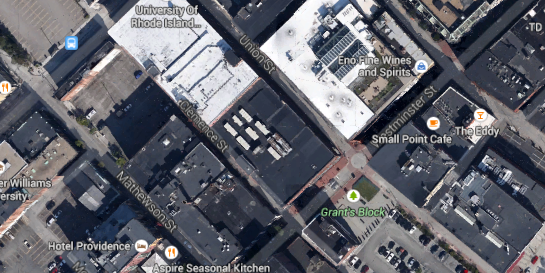 Central Falls, Cranston, East Providence, North Providence, Pawtucket, Providence, and Warwick belong to the upper Narragansett Bay watershed. All of these communities except North Providence have been cooperating in studies of how to prevent stormwater overflow in the region. Phase I of the study is already complete, and Phase II is being worked on. Phase I essentially explores the problem, while Phase II will look into proactive solutions.
Central Falls, Cranston, East Providence, North Providence, Pawtucket, Providence, and Warwick belong to the upper Narragansett Bay watershed. All of these communities except North Providence have been cooperating in studies of how to prevent stormwater overflow in the region. Phase I of the study is already complete, and Phase II is being worked on. Phase I essentially explores the problem, while Phase II will look into proactive solutions.
The problem, summarized briefly, is that the more impermeable surfaces the region has, the more of our fecal matter goes into the bay when it rains. The plan is to think strategically as a region about how to address the amount of impermeable surfaces we have.
A stormwater management district will assess some kind of fee, usually in people’s water bill, according to what kind of impermeable surfaces the user has. Ratepayers will be able to get credits for improvements to their properties that fix their stormwater issues. Assigning appropriate fees and credits is paramount.
But impervious surfaces aren’t all equally bad.
None the less, frequently advocates have turned to a measure of success based on the percentage of land that is impermeable, with the target percentage being under 10 percent. Percentages hide more than they show:
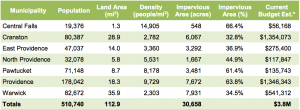
Percentages lie
The highest percentage of impermeable surfaces in the region is in Central Falls, at 66.4%. Providence and Pawtucket are close behind. By contrast, suburban areas like Cranston, East Providence, and Warwick look to have half as much impermeable surface percentage covered.
If you look at the absolute surface area that is covered, it’s clear that Central Falls has the least area that is impervious. In a way this is common sense, because Central Falls is small, but the intuitive thinking about protecting water from overflow pollution is that a lower percentage is better. A really stark illustration of this is in the contrast between Warwick and Providence, for instance. Providence is almost twice as impervious as Warwick by percentage, but by absolute area the two are about equal!
Absolute numbers aren’t even giving the full picture.
If you go deeper still, you see that the per person impervious area is very small in the dense cities, and very high in the suburbs. Each of the 19,378 Central Falls residents has about three-hundredths of an acre of impervious surface to their name. In Warwick, it’s almost a full tenth of an acre per person, about three times as much per capita.
Not all impermeable surfaces are equal
Not every square foot of impermeability is equal, and a future stormwater district should not treat them as such. These images are roughly to scale (100 ft level on Google Maps). The top image is part of Warwick Mall, and the bottom one is part of Downcity, Providence. It’s really a toss-up as to which one has more impermeable surfaces. I might be inclined to guess that Providence has slightly less green space in this shot. It’s a clincher. But it’s very clear which neighborhood is making productive use of land.

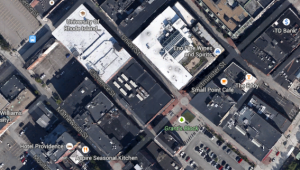
Incentivizing behavior
Phase II of the study, which is not yet completed, will look at solutions. We should be on top of this process to make sure that it incentivizes the right behavior, instead of green-washing the problem.
The Providence image shows that past errors have led to some knocked out teeth in the downtown, now as “temporary” surface lots. A stormwater district should make it clear that it is a positive benefit to the community to redevelop a surface lot into a building, even if the exact same impermeable surface remains. Surface lots don’t just create their own individual problems, but are the lead on land use and transportation misalignments across the board. When there’s a lot of parking, fewer people can live in downtown, and more people will need to drive, leading to wider roads.
The only policy measure floated about parking in the report is about using more permeable surfaces for lots (Central Falls already does this at its Ledge Street municipal lot). On page 87-88, the report states:
It is not enough to simply provide funding for the stormwater program, property owners need to help manage stormwater on-site, at the point it is generated. For example, roof runoff can be directed to a dry well on the property, and depending on the size, parking lot runoff can also be “disconnected” by draining to a lawn area, rain garden or other on-site infiltration or treatment system. Improvements made by property owners reduce the volume of runoff that must be managed by the town and thus reduce the town’s overall stormwater program costs.
To me, this line is like trying to trot out the best new fashions in colostomy bags in lieu of offering preventative measures against colon cancer. Why would we make deeper investments into unproductive land uses in order to deal with a surface symptom of the problems they cause?
The surface lot in the image of the Warwick Mall, which is only a tiny piece of the much larger lot, is not something to be tweaked with an underground treatment system. Of course, kudos on making the owner of such a lot pay for the system him/herself, because it’s much better than having ratepayers see increases in their water bills. But the true solution we should be pushing for is recognizing the cancer of surface parking as what it is so that we can root it out.
Houston, we have a problem
We should look to our past mistakes with stormwater management to make sure we don’t repeat them. Houston is a stunning reminder that not all impermeable surfaces are the same. Houston had a huge stormwater pollution problem, which the EPA approached by disallowing new stresses to the sewer system (i.e., buildings with sewer connections) unless other stresses (other buildings) were removed. Houston developers replied to this well-intentioned regulation by tearing out neighborhoods and replacing them with towers in glimmering fields of asphalt parking lots. The problem remains to this day, and Houston’s downtown would make Warwick Mall blush.
The problem is discussed at some length in this Streetfilms video on parking craters.
Parking Craters: Scourge of American Downtowns from STREETFILMS on Vimeo.
The approach we take needs to understand that parking and wide roads are some of the biggest and most wasteful public liabilities we have, and that rooftops, though impermeable, are not. A surface lot induces more impermeable surfaces and gives the community nothing in return. A building helps to reduce the need for other surfaces, like roads or lots, by adding density, and gives the community economic development that it can use to eventually pay for even greater improvements, like street trees or green roofs.
This is not an idle point. I’ve only had informal conversations with Providence officials about this, but those officials have expressed a kind of quiet embarrassment about what they see as the city’s being behind on stormwater, and needing to catch up to Warwick and Cranston. With this attitude in hand, I’m concerned about what might result.
We need to make sure that those who are writing a stormwater management system do not blame urban areas by misusing the data, and focusing on percentages of impermeable surfaces. The absolute surface area and the per capita area are far more important. Under this analysis, areas like Central Falls are giving the state a credit through their lifestyle everyday, while residents in Warwick are detracting from the health of the state. The fee system set up for stormwater management should reflect this.
~~~~
Small correction: The Streetfilms video mentions Dallas, not Houston. Although, truth be told, Houston does in fact have the same problem. See for example this post from the Final Four competition at Streetfilms’ sister site, Streetsblog. In any case, the point is that we definitely don’t want to follow Texas in anything land use related. It’s a bad scene all around, and we can do better.
]]>